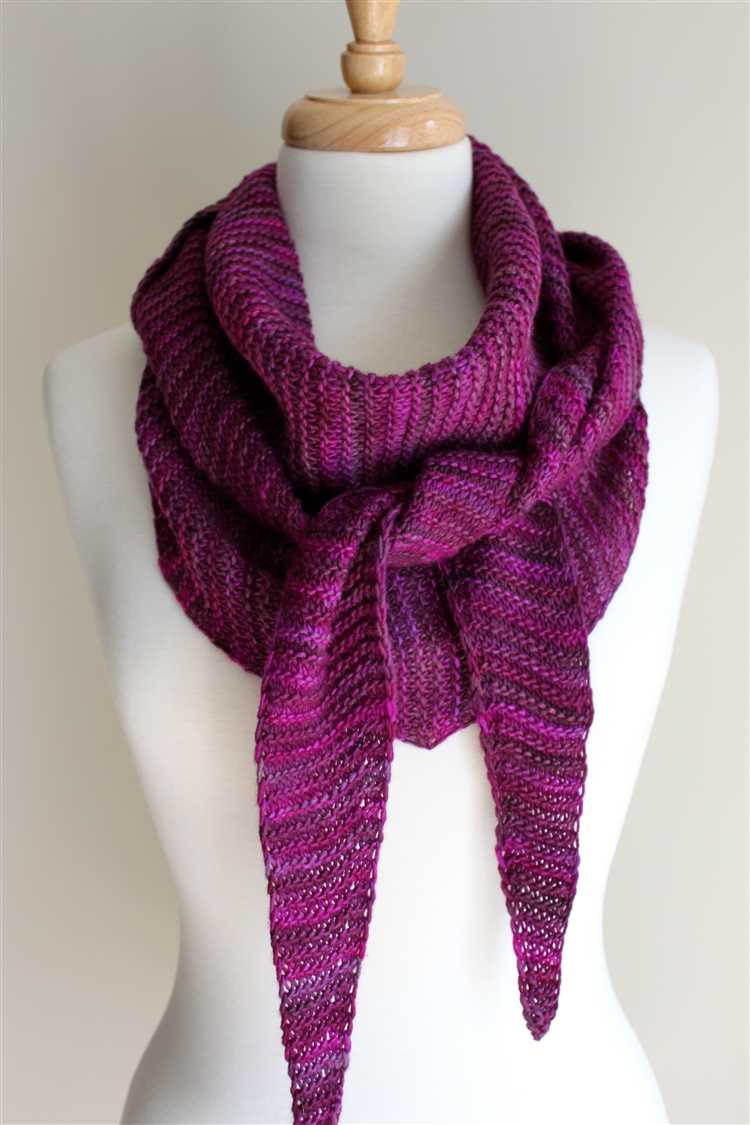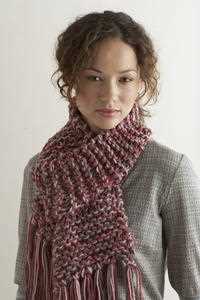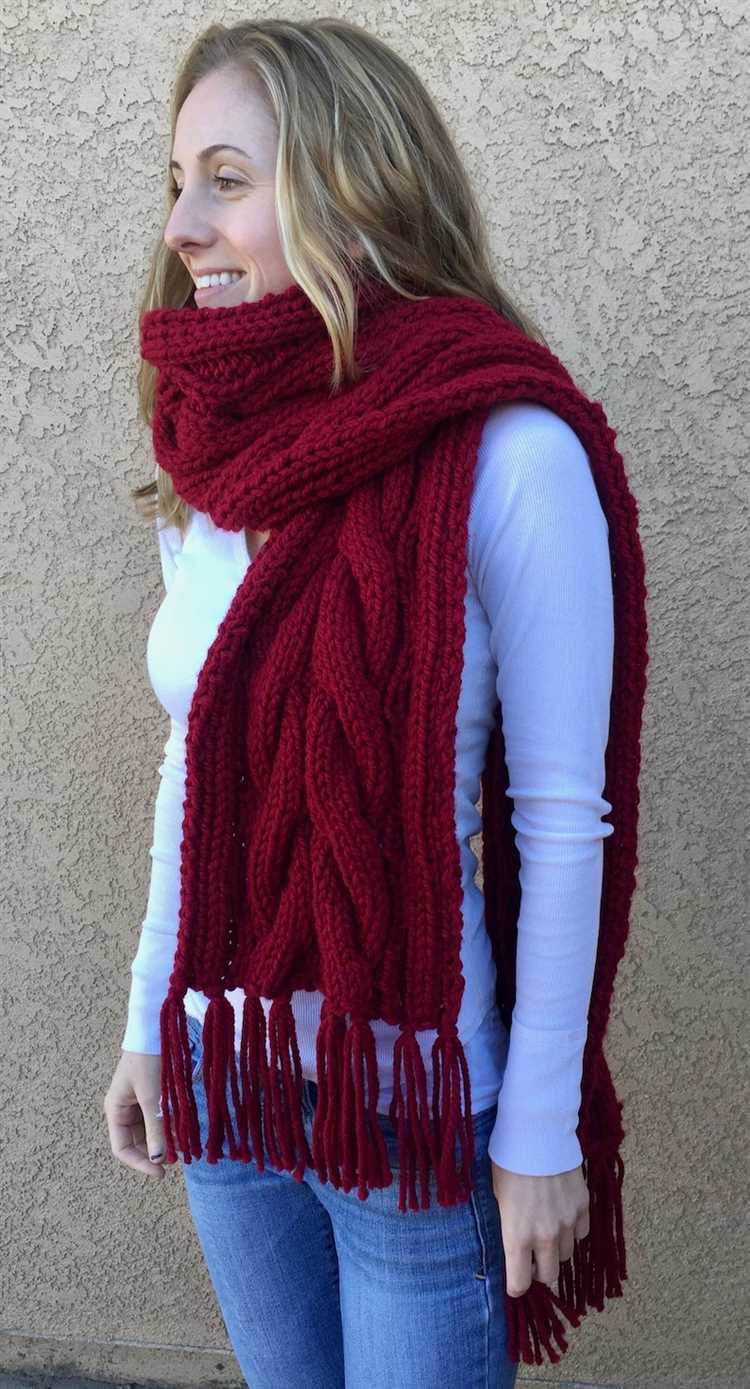Knitting is a popular craft that allows you to create beautiful and functional items with just a pair of knitting needles and some yarn. One of the easiest and most satisfying projects for beginners is knitting a long scarf. Not only is it a great way to practice basic knitting stitches, but it also results in a cozy accessory that you can wear or gift to others.
If you’re new to knitting, don’t be intimidated! This step-by-step guide will walk you through the process of knitting a long scarf from start to finish. With a few basic knitting techniques and some patience, you’ll be able to create a scarf that you can be proud of.
To begin, you’ll need to gather a few supplies. First, choose a pair of knitting needles that are appropriate for the weight of the yarn you’ll be using. You’ll also need a ball of yarn in the color and material of your choice. Make sure to choose a yarn that is labeled as “beginner-friendly” or “easy to knit” to help you get started.
Once you have your supplies ready, you can cast on your first stitches. This is the process of creating a foundation row of stitches on your knitting needles. There are various methods to cast on, but for beginners, the long-tail cast-on method is recommended. This method creates a neat and stretchy edge that is perfect for scarves.
Choosing the Right Yarn and Needles
When embarking on your knitting journey, it’s important to choose the right yarn and needles for your project. The yarn and needle selection can greatly influence the outcome of your scarf in terms of texture, drape, and overall feel.
Yarn:
There are various types of yarn available, each with its own unique characteristics. Here are a few things to consider when choosing yarn for your scarf:
- Fiber content: Yarns can be made from a variety of fibers, such as wool, acrylic, cotton, or a blend of different fibers. Think about the properties you desire in your scarf, such as warmth, softness, or durability, and choose a fiber that aligns with those preferences.
- Weight: Yarns are categorized into different weights, from lace weight to bulky. The weight will determine the thickness of your scarf and may also affect how long it takes to complete the project. For a beginner scarf, a medium weight yarn, such as worsted weight (4) or aran weight (4), is often a good choice.
- Color and texture: Consider the color palette and texture you want to achieve in your scarf. Yarns come in a wide range of colors, from solid to variegated, and can have varying textures, such as smooth, fluffy, or bumpy.
Needles:
The size and type of needles you choose will also affect the outcome of your scarf. Here are a few things to consider when selecting needles for your project:
- Size: Needle sizes are measured in millimeters or US sizes. The size of your needles will determine the tension and gauge of your stitches. The yarn label usually suggests a recommended needle size for the yarn weight, so be sure to check that to ensure a proper match.
- Type: Needles can be made from various materials, such as metal, wood, or plastic. Each material has its own feel and may affect the ease of knitting. Some knitters prefer the smoothness of metal needles, while others enjoy the warmth and grip of wooden needles. Experiment with different types to find what works best for you.
By carefully selecting the right yarn and needles for your knitting project, you’ll set yourself up for success and create a scarf that meets your desired specifications in terms of texture, appearance, and overall satisfaction.
Casting On: Getting Started with Your First Stitches
Before you can begin knitting your scarf, you need to cast on your first stitches. Casting on is the process of creating the initial row of stitches on your knitting needles.
There are several methods for casting on, but the most common method for beginners is the slipknot method. Follow these steps to get started:
- Start by making a slipknot. To do this, create a loop with your yarn and pull the end through the loop. Tighten the loop by pulling the ends of the yarn.
- Insert your right-hand knitting needle into the slipknot, from front to back. Hold the slipknot and the knitting needle in your right hand, with the rest of the yarn in your left hand.
- Using your left hand, wrap the yarn around your thumb and then bring it behind your index finger.
- Insert the right-hand knitting needle under your thumb and catch the yarn from the front to back, pulling it through the loop on your thumb.
- Release your thumb from the loop and tighten the stitch by pulling gently on the working yarn.
- Repeat steps 3-5 until you have cast on the desired number of stitches for your scarf.
Once you have completed the casting on process, you are ready to start knitting! Remember to keep your tension consistent and take your time as you work through each stitch. Happy knitting!
Knitting the First Row: Creating the Foundation
Before you can start knitting your long scarf, you need to create the foundation by knitting the first row. This row will set the stage for the rest of your project, so it’s important to take your time and ensure that you have the correct number of stitches.
To begin, make sure you have your knitting needles and yarn ready. Choose a yarn that matches your desired finished scarf and use knitting needles that are appropriate for the thickness of your yarn.
1. Start by casting on the desired number of stitches onto one of your knitting needles. The number of stitches will depend on the width of your scarf, so make sure to refer to your pattern or measure out the desired width beforehand.
2. Holding the needle with the cast-on stitches in your right hand, insert the tip of your empty knitting needle into the first stitch on the left-hand needle, from front to back.
3. With your right hand, wrap the yarn over the tip of the right-hand needle counterclockwise, crossing over the left-hand needle. This creates a loop of yarn around the right-hand needle.
4. Use your right-hand needle to pull the loop of yarn through the first stitch, creating a new stitch on the right-hand needle. Make sure to leave the original stitch on the left-hand needle.
5. Continue this process, inserting the right-hand needle into the next stitch on the left-hand needle, wrapping the yarn counterclockwise, and pulling it through to create new stitches on the right-hand needle. Repeat until you have worked your way across all of the stitches on the left-hand needle.
6. Once you have finished knitting the first row, you will have a new row of stitches on your right-hand needle. Carefully slide the stitches from the right-hand needle back onto the left-hand needle, so that the right-hand needle is once again empty and ready to knit the next row.
By following these steps, you have successfully knitted the first row of your long scarf and created the foundation for your project. It’s important to practice these techniques to ensure that your stitches are even and consistent.
Basic Knitting Stitch: Mastering the Knit Stitch
The knit stitch is one of the fundamental stitches in knitting. Mastering this stitch will open up a world of possibilities for creating various patterns and designs. Here is a step-by-step guide on how to knit the basic knit stitch.
- Step 1: Cast on
- Step 2: Hold the needles
- Step 3: Insert the right needle
- Step 4: Wrap the yarn
- Step 5: Pull through
- Step 6: Slide off the old stitch
- Step 7: Repeat
To begin, cast on the desired number of stitches using your preferred casting on method. This will determine the width of your scarf.
Hold one needle in your right hand (if you’re right-handed) and the other needle in your left hand. The needle with the cast on stitches should be in your left hand.
Insert the right needle into the first stitch on the left needle, going from left to right.
Take the working yarn (the yarn attached to the ball) with your right hand and wrap it around the back of the right needle, from right to left.
With the right needle, pull the wrapped yarn through the stitch on the left needle, creating a new stitch on the right needle.
Slide the old stitch off the left needle, leaving the new stitch on the right needle.
Continue steps 3 to 6 for each stitch until you reach the end of the row. This is called knitting a row.
By repeating these steps, you will be able to create a fabric of interlocking loops, known as the knit stitch. Practice this stitch until you feel comfortable with the motion.
Once you have mastered the basic knit stitch, you can explore different stitch patterns and techniques to create more intricate designs. The possibilities are endless!
Purl Stitch: Adding Texture to Your Scarf
Once you have mastered the basic knit stitch, you can add texture and variety to your scarf by learning the purl stitch. The purl stitch is the reverse of the knit stitch and creates a bumpy texture on your fabric.
To purl stitch, follow these steps:
- Hold the knitting needles in your dominant hand, with the working yarn attached to the back needle.
- Insert the right needle into the front of the first stitch on the left needle, from right to left.
- Wrap the working yarn counterclockwise around the right needle, crossing over the left needle.
- Gently pull the right needle back through the stitch, while keeping the left needle steady.
After completing a purl stitch, you will have a loop of the working yarn on your right needle, and the stitch will be transferred from the left needle to the right needle.
Continue purling stitches across the row, following the same steps. Remember to keep a consistent tension and not to pull the yarn too tightly.
To create a ribbing effect, alternate between purl stitches and knit stitches in each row. This will give your scarf a classic textured look.
Remember to practice the purl stitch before incorporating it into your scarf project. With time and practice, you will become more comfortable with this stitch and be able to create various textured patterns.
So go ahead and add some texture to your scarf using the purl stitch! It’s a great way to enhance your knitting skills and create a unique and beautiful accessory.
Creating Patterns: Trying Different Stitch Combinations
Once you have mastered the basic stitches and have knit a long scarf using those stitches, it’s time to get creative with different stitch combinations. By combining different stitches, you can create unique patterns and textures in your knitting projects.
Here are a few stitch combinations to try:
- Stockinette and Garter Stitch: Create a striped pattern by alternating between knitting rows in stockinette stitch (knit on right side, purl on wrong side) and garter stitch (knit every row). This combination creates a nice contrast between smooth and textured fabric.
- Ribbing and Seed Stitch: Ribbing is created by alternating knit and purl stitches. Combine ribbing with seed stitch (alternating knit and purl stitches within the same row) to add more texture to your project.
- Cable and Moss Stitch: Incorporate cables into your knitting by crossing stitches over one another. Combine cables with moss stitch (alternating knit and purl stitches within the same row) to create a richly textured fabric.
- Lace and Garter Stitch: Try knitting lace patterns, which involve yarn overs and decreases, in combination with garter stitch. The garter stitch will create a textured background for the lace motifs to stand out.
Experiment with different stitch combinations and see what patterns and textures you can create. Don’t be afraid to mix and match stitches to create your own unique designs. Remember to practice each new stitch combination on a small swatch before incorporating it into a larger project.
Happy knitting!
Changing Colors: Making Your Scarf More Vibrant
Once you have mastered the basics of knitting and have completed a few rows of your scarf, you may want to experiment with changing colors to make it more vibrant and interesting. Here are a couple of simple techniques you can use to add color to your scarf.
1. Stripes:
One of the easiest ways to introduce color to your scarf is by knitting stripes. To do this, simply change to a new color yarn at the beginning of a row. Knit the entire row with the new color, and then switch back to the original color for the next row. Repeat this process as desired to create bold, contrasting stripes.
2. Color blocks:
Another option is to create color blocks within your scarf. To do this, knit a certain number of rows with a single color, and then switch to a new color for the next set of rows. Continue alternating colors to create distinct blocks of color throughout your scarf.
3. Fair Isle:
If you’re feeling adventurous, you can try incorporating a Fair Isle pattern into your scarf. Fair Isle is a technique that involves knitting with multiple colors in a single row to create intricate patterns. It can be a bit more challenging than simply changing colors, but the results can be stunning.
4. Ombre effect:
An ombre effect can be achieved by gradually transitioning from one color to another. You can do this by knitting rows with a gradually changing shade of yarn, or by using different colors in each row and blending them together as you knit.
5. Stranded knitting:
Stranded knitting is a technique that involves carrying two or more colors of yarn across the back of your work to create patterns or motifs. This can be a great way to add color and interest to your scarf, but it requires a bit more skill and practice than the previous methods.
Remember, the key to successfully adding color to your scarf is to experiment and have fun! Don’t be afraid to try new techniques and combinations of colors to create a truly unique and vibrant scarf.
Binding Off: Finishing Your Scarf with a Neat Edge
Once you have completed knitting your long scarf, it’s time to finish it off with a neat edge. Binding off is the final step in the process, and it ensures that your scarf has a clean and polished look. Follow these steps to bind off your scarf:
- Start by knitting the first two stitches of the row as usual.
- Insert your left-hand needle into the first stitch on your right-hand needle.
- Use the left-hand needle to lift the first stitch over the second stitch and off the right-hand needle. This will bind off the first stitch.
- Knit the next stitch on your right-hand needle.
- Repeat steps 2-4 until you have bound off all of your stitches, except for the last one.
- To bind off the last stitch, cut your yarn, leaving a long tail.
- Thread the tail through the last stitch and pull tight to secure.
- Weave in any remaining yarn tails at the beginning and end of your scarf to finish.
Binding off creates a row of loops along the edge of your scarf, preventing it from unraveling. This technique gives your scarf a professional and polished finish. Once you have bound off your stitches, you can remove your knitting needles and admire your completed long scarf.
FAQ:
What materials do I need to knit a long scarf?
To knit a long scarf, you will need yarn of your choice, knitting needles, a pair of scissors, and a tapestry needle for weaving in the ends.
How long should a long scarf be?
The length of a long scarf can vary depending on personal preference, but a typical length is around 60-70 inches. However, you can make it longer or shorter according to your needs.
What kind of yarn is best for a long scarf?
There are various types of yarn you can choose from for a long scarf, such as acrylic, wool, cashmere, or cotton. It ultimately depends on your budget, comfort, and desired style.
Can I use circular needles instead of straight needles?
Yes, you can use circular needles instead of straight needles for knitting a long scarf. Circular needles are often preferred by knitters as they distribute the weight of the project more evenly and make it easier to store and transport.
Is knitting a long scarf difficult for a beginner?
Knitting a long scarf is a great project for beginners as it involves simple stitches and repetitive patterns. With a little practice and patience, you can easily knit a beautiful and cozy scarf.
How long does it take to knit a long scarf?
The time it takes to knit a long scarf varies depending on your knitting speed, the complexity of the pattern, and the length of the scarf. On average, it can take anywhere from a few days to a few weeks to complete.
Are there any tips for preventing mistakes while knitting a long scarf?
To prevent mistakes while knitting a long scarf, it’s helpful to count your stitches regularly, use stitch markers to keep track of your progress, and check your work frequently. Additionally, watching tutorials and practicing basic knitting techniques can improve your skills and reduce errors.


